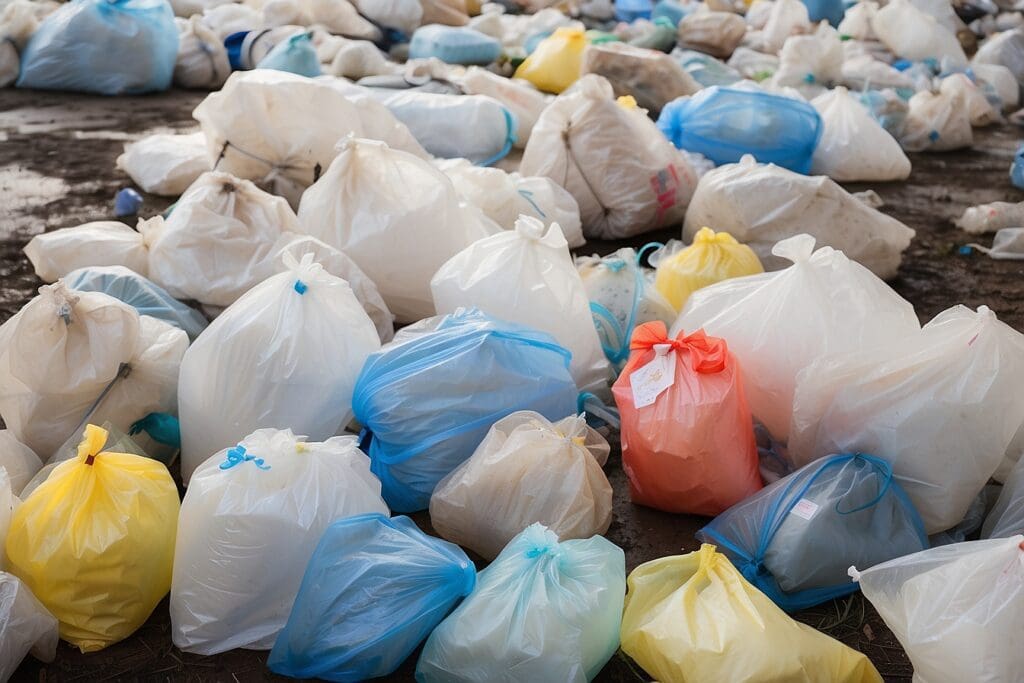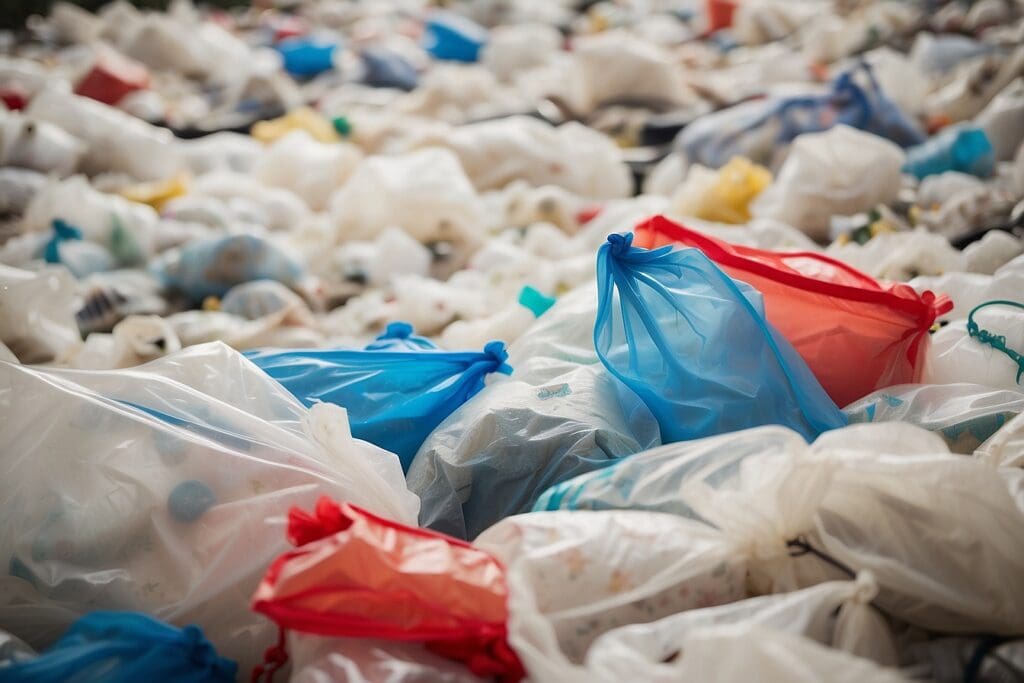So we know that plastic bags are bad. To this end, cities around the world are thinking of enacting plastic bag bans or taxes, and many people are now using reusable bags. Because of this increased attention, there are numerous facts and factoids being thrown around regarding single-use bags, with everybody tooting their horn. In an effort to demystify the info, I looked into the matter, and have shared my findings below.
History of the Plastic Bag
Although it is tough to imagine a world without plastic bags, it turns out that plastic bags are only a recent addition to the consumer landscape. The first plastic sandwich bag was created in the 1950s,1 with grocery and department stores widely adopting plastic bags in the 1980s after an increasing concern for the environmental impact of paper bags and the luxury of strong bags with handles.2 Since then, the use of plastic bags has exploded, driven in large part by their cheap price and efficient checkout practices. However, the tide has begun to shift recently, with many cities passing bag bans or taxes on the use of plastic bags, depending on local regulations.
Where are Plastic Bags Made From?
Plastic bags are derived from natural gas , with North American bags primarily made with natural gas (imported bags may be made primarily with oil). The oil or gas used comes from the standard refining process, with only a fraction of oil or gas production utilized for bag manufacturing.3 Frequently ignored in the oil discussion is the energy required to produce and transport plastic bags.
Where do Plastic Bags End Up?

Plastic bags are best thought about in the words of a UC Santa Barbara student’s letter to the editor: “I only question the logic in using something that was designed to last forever when you intend to use it only once.” The environmental impacts of plastic bags are well-documented. They end up floating sent abroad along with other things people in the U.S. put in their recycling bins.
At the end of the day, plastic bags cost money. This represents an overhead cost that is passed on to consumers—we are paying for these bags whether we like it or not. Eliminating bags ultimately will save us money. And perhaps more importantly, plastic bags cost waste handlers a considerable amount of dough as well. Recently, I toured a Bay Area waste facility with elaborate conveyor belts and sorting systems that are remarkably gifted at finding recyclables in piles of trash. However, they mentioned that plastic bags routinely get stuck in these systems, causing jams and a back of the envelope estimated $400,000 in lost productivity and mechanical failures. This cost is similarly passed on to each of us when we pay our trash bill. According to California Recycles, plastic bags cost the state of California $25 million annually.4
What About Paper and Biodegradable Bags?
They still have the same problem as a single-use plastic bag! They aren’t designed to be used more than once. Not so surprisingly, each type of single-use bag, whether it be paper, plastic, or “biodegradable” have their own unique problems when it comes to environmental impacts.
Paper bags use anywhere from 3-5 times as much energy in their production as plastic bags.5 Additionally, they require an incredible amount of energy to be recycled, and when they are recycled, they tend to be used in corrugated cardboard rather than new paper bags. Although paper can degrade and doesn’t come from petroleum, most modern landfills prevent biodegradation because they are anaerobic. Additionally, paper takes up considerably more space in the landfill and in shipping trucks than plastic bags. It’s no wonder people once hailed plastic bags as the next great environmental solution!
Biodegradable bags are perhaps even worse because they are very misleading at the present moment. While their source material is plant based, industrial agriculture is still highly petroleum dependent. Additionally, studies suggest that the production of these bags is often more energy intensive than traditional plastic bag manufacturing.6 And even if both of these processes were used with renewable energy sources, they only are guaranteed to degrade with industrial composting facilities. Finally, even if they are properly disposed, many bags do not actually biodegrade. There is great confusion and minimal regulation regarding the composition of these bags. Many types simply break down into smaller pieces of plastic and leave behind small bits of metal.
So what is there to do?
Well, you’ve heard it before, but it’s true. Reusable bags are the way to go—as long as you actually reuse them. Reusable bags are becoming more commonplace and less of a grocery store faux paw ☺ For more ideas on reducing plastic in your life, check out this guide: Reduce Plastic 🙂





